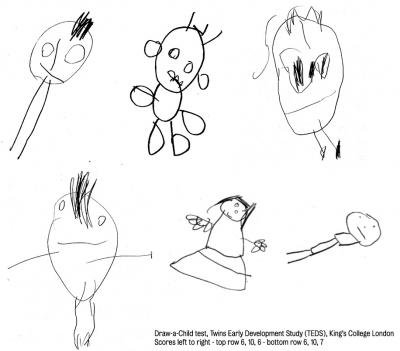If you’re a parent of a young child, your refrigerator is probably plastered with drawings. Have you ever looked carefully at the drawings? A new study published this week in the journal Psychological Science says the ability to draw a picture of a child may be linked to their intelligence later on.
The study involved more than 7,700 identical and nonidentical twins age 4. The study was led by Dr. Rosalind Arden, a professor of psychiatry at King’s College London, in the U.K.
Children were asked by their parents to complete a Draw-a-Child test. Each drawing was given a score between 0 and 12 depending on the presence and correct quantity of features such as head, eyes, nose, mouth, ears, hair, body arms, etc.
The researchers found those with a higher score on the test were also associated to have higher scores of intelligence from verbal and non-verbal intelligence tests at ages 4 and 14.
While drawing ability alone does not determine intelligence, the correlation between the ability to draw at age 4 and later intelligence is moderate, according to Dr. Arden in a statement.
The Draw-a-Child test has been around since the 1920s, so it’s no surprise “that the test correlated with intelligence at age 4,” said Dr. Arden. “What surprised us was that it correlated with intelligence a decade later.”
The study also found the drawing from identical twins pairs were similar to one another than drawings from non-identical twin pairs, which indicates differences in children’s drawings have an important genetic link.
Dr. Arden added: “This is not to mean there is a drawing gene – a child’s ability to draw stems from any other abilities, such as observing, holding a pencil etc.” Also, the “capacity to reproduce figures is a uniquely human ability and a sign of cognitive ability, in a similar way to writing, which transformed the human species’ ability to store information, and build a civilization.”
[Source: Institute of Psychiatry, King’s College London]
Photo by Twins Early Development Study, King’s College London, depicting children’s drawings with scores










